Cannabis cultivation is a fine art — one that comes with a massive amount of trial and error before it’s mastered. And when it comes to cultivation success, one of the most important things to pay attention to is your plants’ nutritional needs.
Like any living creature on its way to maturity, plants require a very specific blend of tender loving care to survive and thrive — and cannabis is no different. If your plants aren’t getting their basic needs met with temperature, humidity levels, grow medium, proper lighting light, water, pH and diet, they’re going to develop nutrient deficiencies that can be detrimental to a cultivator or brand.
Coming across nutrient deficiencies is basically inevitable in the world of commercial cannabis cultivation, which is why it’s imperative for growers and staff to properly educate themselves on how to spot and cope with these issues quickly. In fact, the ability to resolve these troublesome issues is one of the major ways a master grower can separate themselves from the crowd. As every commercial cultivator knows, no two grow rooms are identical and every plant requires some special attention to reach its potential.
What Are Cannabis Nutrient Deficiencies?
A cannabis nutrient deficiency can look like quite a few different things, but in general, it is defined by a cannabis plant not being unable to access a key nutrient and/or mineral at the right stage that’s essential for healthy cultivation. If the pH of your growing soil is off, your roots may struggle to absorb what you’re feeding them.
This is one of the most difficult things to master as a cultivator. While your marijuana plants may be well fed, watered, and cared for, if they lack even one essential nutrient for growth, it can have profoundly negative effects on the process.
A cannabis plant that’s lacking proper nutrients will become stressed, rendering it susceptible to pests, mold, and other harmful pathogens that may result in severe damage to your crop.
But how do you know if a cannabis plant is absorbing all of its required nutrients?
Many cultivators refer to N-P-K in order to ensure their plants are properly taken care of — a.k.a., Nitrogen (N), Phosphorous (P), and Potassium (K). In fact, this is true for any plant food in the agricultural industry, as the percentage of these three elements is always represented on labeling for reference.
This will act as the biggest indicator of whether your cannabis plant is healthy, but there are quite a few visual details that will tip off experienced cultivators — as long as they know what to look for on plants and how to deal with major leaf problems.
How to Identify a Nutrient Deficiency
Thankfully, nutrient deficiencies are accompanied by obvious differences in the plant’s physical appearance and overall presentation, and there are a few things you can pay attention to when feeding your plants to determine the health of your crop at every stage.
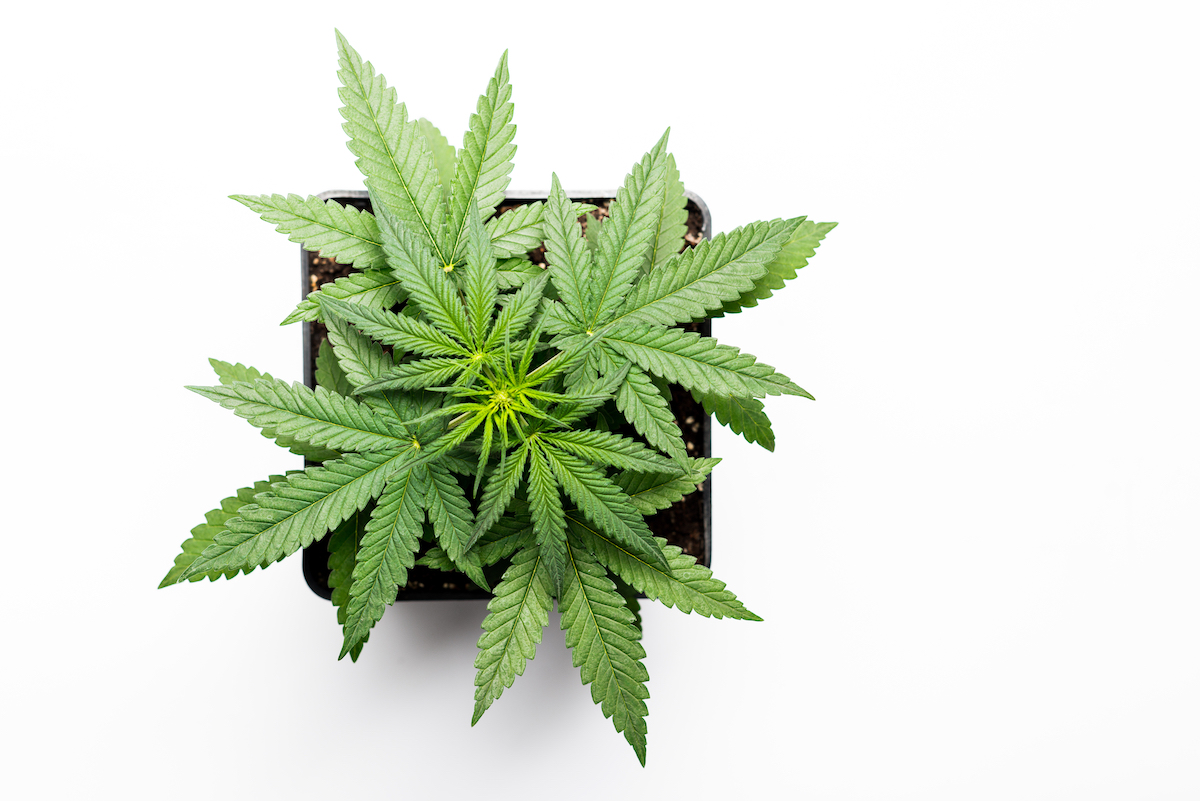
3 Common Vegetative Stage Deficiencies
To further complicate things, your cannabis plant will require different levels of nutrients depending on its growth cycle stage, and if you don’t adjust items like your cannabis pH level, your plant may suffer.
Here are some of the most common deficiencies that occur in cannabis plants during their vegetative state:
- Nitrogen Deficiencies: a nitrogen deficiency is probably the most common type of cannabis nutrient deficiency to take place in the vegetative stage. A lack of proper nitrogen can be identified by a progressive yellowing of the plant’s leaves, usually from the bottom moving upward.
- Magnesium Deficiencies: a magnesium deficiency can take place in either the vegetative or flowering state. This type of deficiency is evidenced by interveinal yellowing and can be resolved by including more Epsom salt in the feed cycle to absorb nutrients.
- Sulfur Deficiencies: a sulfur deficiency can also take place in either the vegetative or flowering stage of the plant, and they’re easy to confuse with magnesium and/or nitrogen deficiencies. However, sulfur deficiencies are usually also resolved with an increase of Epsom salt during feeding.
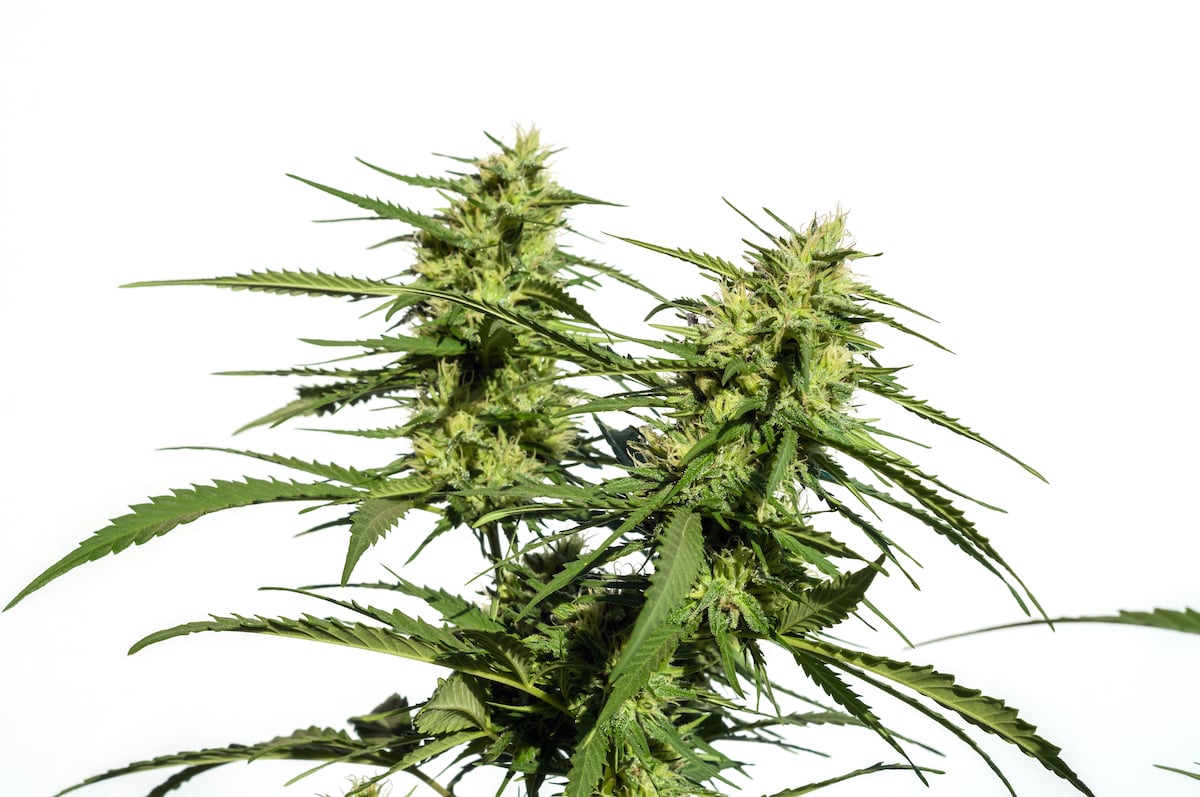
3 Common Flowering Stage Deficiencies
These are some of the most common identifiable deficiencies that tend to occur in cannabis plants at the flowering stage:
- Iron Deficiencies: an iron deficiency will be visibly similar to magnesium deficiencies, making them difficult to identify. However, if one deficiency is occurring, the other is likely to follow, so increasing the supply of both nutrients usually knocks out both problems in one go.
- Potassium Deficiencies: flowering plants use a lot of potassium to help them grow. A potassium deficiency will look like yellowing, “burnt”-like leaf edges that often occur on older leaves.
- Phosphorus Deficiencies: if your plant isn’t getting enough phosphorus during the flowering stage, it will start to experience brown spotting, slowed growth, and new leaves that are significantly smaller than usual. Simply remove or trim the affected leaves and boost your feed cycle with phosphorus-rich products.
4 Other Cannabis Nutrient Deficiencies to Spot
If you’re aware and proactive with the previously mentioned deficiencies, your cannabis crop should be healthy and well, but there are a few other deficiencies that may occur despite your very best efforts.
Here are some final possible nutrient deficiencies to look out for when cultivating cannabis:
- Zinc Deficiencies: without enough zinc, your cannabis plant’s leaves may start to yellow in between the veins. Test the ph level to ensure it’s not becoming too alkaline which can affect the root’s ability to absorb zinc effectively.
- Calcium Deficiencies: a calcium deficiency is one of the more difficult items to diagnose. Without enough calcium, your younger cannabis leaves will begin to curl. In many cases, growers will see calcium, magnesium and iron deficiencies at the same time.
- Manganese Deficiencies: without enough manganese, your cannabis plant’s leaves will start to yellow and brown spots will appear, similar to what occurs during a phosphorus deficiency. Manganese deficiencies are most common in new, smaller leaves.
- Copper Deficiencies: without enough copper, your cannabis plant’s leaves will turn dark and shiny. Copper deficiencies can be easier to spot as the leaves tend to turn a dark shade of blue or purple with burned yellow tips, typically due to the improper pH level.
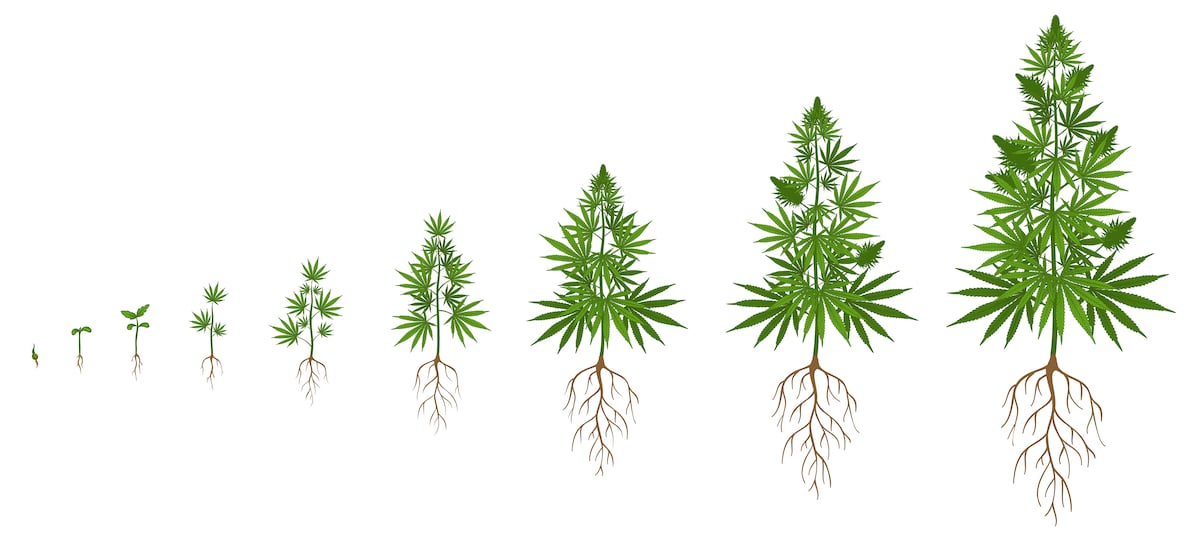
How to Treat Nutrient Deficiencies in Cannabis
When ensuring your cannabis plant is properly taken care of, balance is key. However, even if you’ve provided your plants with the proper amount of the right nutrients, they still might struggle to absorb everything efficiently through their root systems if the pH of the water or grow medium isn’t ideal. The ideal pH is 5.8 to 6.8, slightly toward the acidic side of neutral. A pH of 3 and below is considered toxic while a pH of 9 and above will result in root damage. A pH of 6.3 is generally considered an ideal target to benchmark against and make minor adjustments with each successful harvest.
Learn to identify these common nutrient deficiencies in cannabis plants and you’ll know exactly what to look for when things are off — and, more importantly, how to resolve the minor issue before it turns into a major problem with significant financial repercussions.







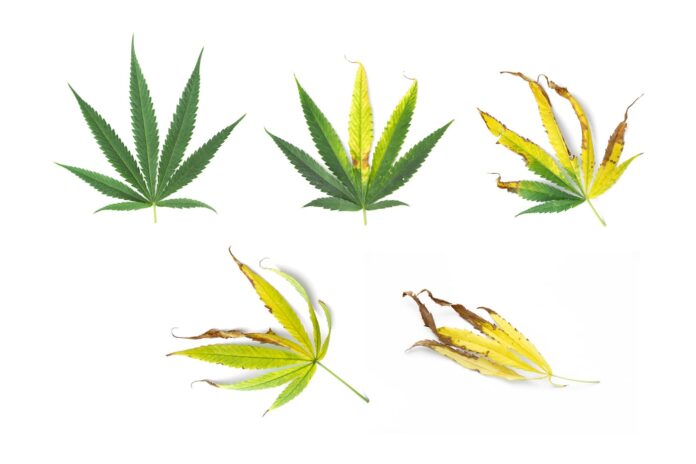

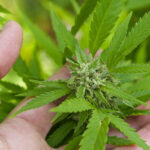

[…] to prevent this [nutrient burn] from happening,” said Gumaer. “Certain strains may be prone to micronutrient deficiencies more than others. A lot of times, those deficiencies correct themselves as long as you’re […]
[…] you see burnt leaf tips, it could be a sign of nutrient burn. Remove any heavily damaged leaves and flush the plants with pH-balanced water to prevent further […]
[…] and aromatic products, increased vigor, better heat and drought tolerance, and less of a need for fertilizer and water. This means environmental impact would be significantly reduced, and the industry would be leaving […]
[…] and quality. Excessive amounts of light can also cause the breakdown of chlorophyll—if you see bleached or brown plant material, that’s a big sign to make […]
[…] nutrient deficiency during the vegetative stage can be relatively easy to spot. One telltale sign is yellowing leaves. […]
[…] which provides energy for the plant’s growth. Yellowing leaves usually signify a nitrogen nutrient deficiency or overwatering. Nitrogen should be applied most in the vegetative stage and lowered to allow […]
[…] testing on the farm to maintain detailed records that can be used to make improvements to soil, nutrients, and other […]
[…] have to make sure you’re setting eyes on your plants on a daily basis,” Vaserling said. “Thankfully, bud rot is not like a powdery mildew that spreads. It’s very […]
[…] be relying on your best guess to determine if your plants are set to thrive with the pH and nutrient levels you’ve provided in your […]
[…] a good number of man-hours. Without automation, growers must pay close attention to growth cycles, ensuring their plants are fed, watered, and cared for. This means they’re constantly having to think about proper temperature, […]
[…] had to figure out what the cultivators needed, how the facilities are built, and what the plants need. We started coming up with different optics to improve what the diodes were actually emitting, and […]
[…] vision has become a vital tool in quality control within the industry. With the ability to analyze plant health, assess maturity, and detect anomalies based on physical appearances, computer-vision systems can […]
[…] Such operators have fine-tuned conditions like temperature, soil, humidity levels, lighting, nutrients, and more to grow the finest plants while leveraging innovative technology to achieve superior […]
[…] the discussion is dominated by everything that happens before the harvest. Lighting, soil types, nutrients, pH, and a myriad of other inputs play a critical role in the development of a cannabis plant, but […]
[…] the tone that has settled over some quarters. True, bickering on grow forums and Reddit about the best nutrients, lights, or trimming machines is nothing new among passionate people disputing best practices or […]